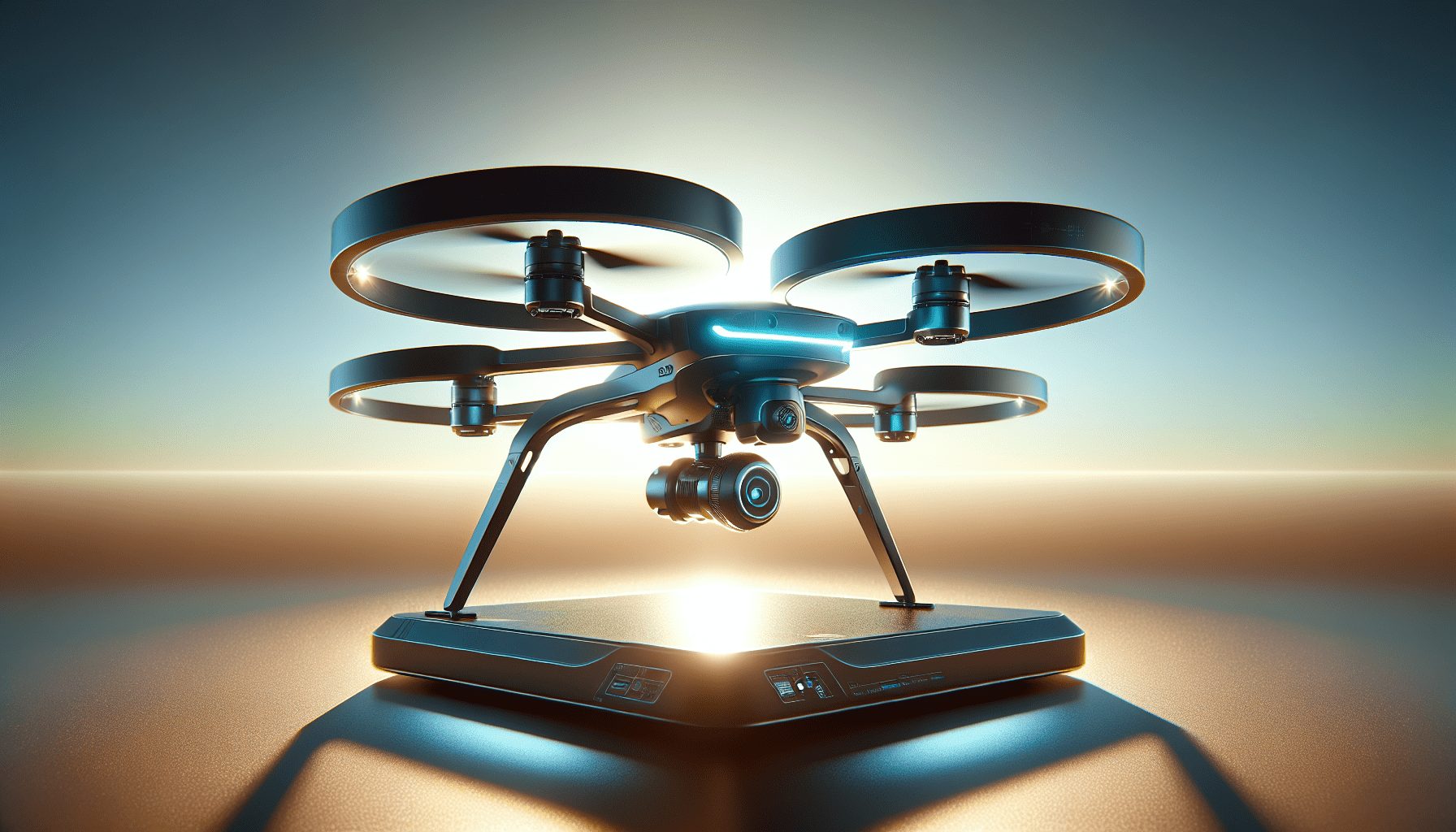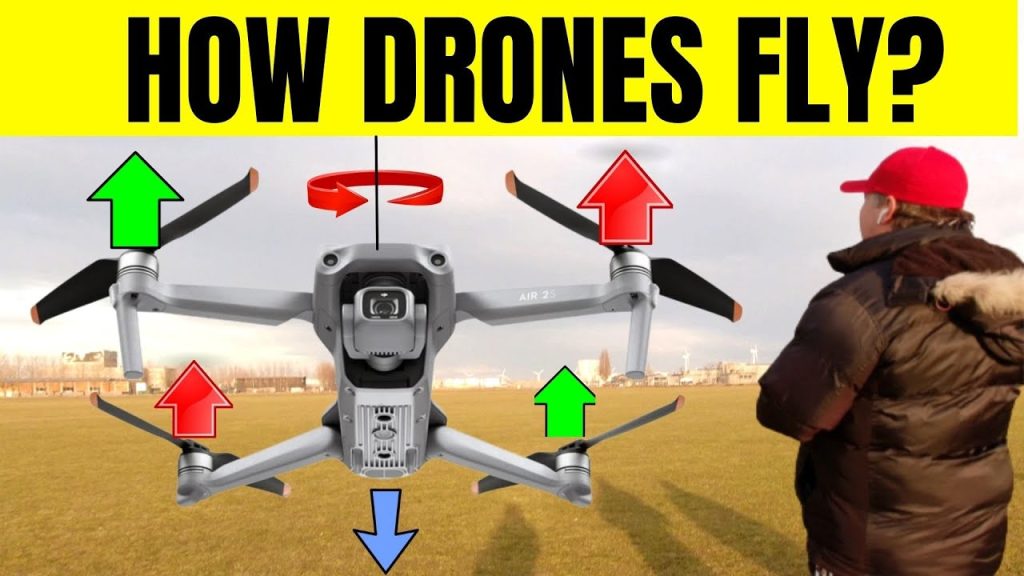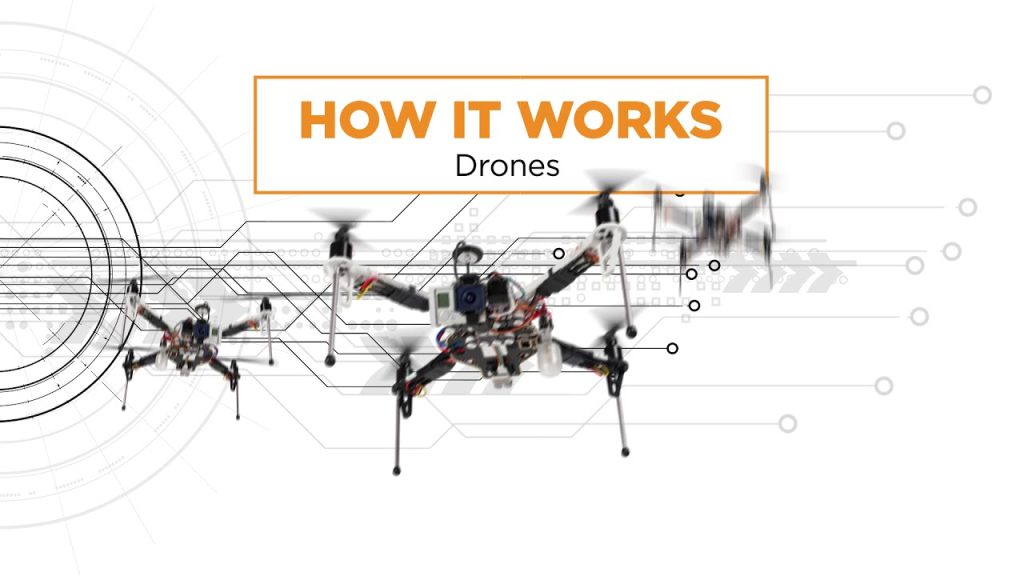Physical Address
304 North Cardinal St.
Dorchester Center, MA 02124
Physical Address
304 North Cardinal St.
Dorchester Center, MA 02124


This post may contain affiliate links. As an Amazon Associate, we may earn commissions from qualifying purchases.
In this article, you will uncover the intricate workings of drones and learn about the key components that keep these marvels of engineering soaring through the skies. From the powerful motors and sophisticated onboard sensors to the innovative software that guides their flight paths, you’ll gain a comprehensive understanding of how these aerial wonders operate. So, strap in, because you are about to dive into the technology that is revolutionizing industries and capturing imaginations worldwide. Have you ever watched a drone zip across the sky and wondered, “How do drones work?” These mesmerizing machines, once purely the stuff of science fiction, are now widely used for everything from aerial photography to delivering packages. Let’s dive into the fascinating world of drones to understand what makes them tick.
Before we get into the nitty-gritty of how drones work, let’s start with a basic question: what exactly is a drone? A drone, also known as an Unmanned Aerial Vehicle (UAV), is an aircraft without a human pilot aboard. Instead, they’re controlled either autonomously by onboard computers or remotely by a human operator. Drones come in various shapes and sizes, each designed with specific capabilities and uses in mind.
There are several categories of drones, mainly differing by their structure, intended use, and capabilities. Here’s a quick overview:
| Drone Type | Description | Common Uses |
|---|---|---|
| Fixed-Wing Drones | Resemble small airplanes with a rigid wing structure. | Agricultural surveillance, mapping |
| Rotary-Wing Drones | Feature multiple rotor blades, offering vertical takeoff and landing capabilities. | Aerial photography, inspections |
| Single-Rotor Drones | Similar to helicopters with one main rotor and a smaller tail rotor. | Heavy payload deliveries |
| Hybrid Drones | Combine features of both fixed-wing and rotary-wing drones. | Extended flight applications |
To understand how drones work, you need to become familiar with their core components. Most drones, irrespective of their type, come equipped with essential parts like motors, sensors, cameras, and control systems.
The frame is the skeleton of the drone, providing the structural integrity needed to support all other components. It can be made of various materials such as plastic, carbon fiber, or aluminum. The choice of material impacts the drone’s weight and performance.
Motors are the powerhouse of drones, usually electric and commonly brushless for better performance. Each motor’s speed and direction control the motion and stability of the drone.
Propellers work in tandem with the motors to create lift and thrust. Adjusting the speed of the motors changes the rotational speed of the propellers, affecting the drone’s altitude and direction. Multi-rotor drones frequently use four (quadcopters), six (hexacopters), or eight (octocopters) propellers.
The flight controller is the drone’s brain. It processes data from various sensors and decides how to move the motors to achieve stable flight. This piece of technology deals with everything from balancing the drone to executing complex flight patterns.
Electronic Speed Controllers are directly connected to the motors. They interpret signals from the flight controller to adjust the motor speeds, ensuring precise control over the drone’s flight.
Drones run on rechargeable batteries, usually Lithium Polymer (LiPo) due to their high energy density. The battery life influences how long a drone can stay airborne, which may range from a few minutes to several hours, depending on the drone type and usage.
Many drones come equipped with GPS modules, particularly those designed for precise tasks like mapping or autonomous flying. GPS helps in navigation, enabling features like waypoint navigation and return-to-home.
Drones use various sensors to measure altitude, detect obstacles, and monitor environmental conditions. Common sensors include:

The key to a drone’s ability to fly lies in its propellers and motors working together. The motor’s torque spins the propellers, which in turn create lift by forcing air downward. When the lift generated by the propellers equals the drone’s weight, it hovers. Increasing the motor speed generates more lift, causing the drone to ascend. Lowering the speed causes it to descend.
Flying is only part of what makes drones remarkable; they must maintain stability in varying conditions. This is where the flight controller comes into play, armed with pre-programmed algorithms to adjust motor speeds continuously to keep the drone balanced.
Here’s a simple breakdown of stabilization:
An important part of stabilization is the Inertial Measurement Unit (IMU). Consisting of accelerometers and gyroscopes, the IMU detects the drone’s orientation and speed. It sends real-time data to the flight controller, which makes quick adjustments to maintain stability.
Navigation relies heavily on GPS modules, especially for drones on pre-programmed missions or those that require a high level of autonomy. The GPS data is fed into the flight controller, which calculates the drone’s position, altitude, and trajectory. But GPS isn’t the only tool in a drone’s navigation arsenal.
Waypoint navigation allows you to plot a specific route for the drone to follow. You can input multiple coordinates, and the drone will travel from one waypoint to another, adjusting its path as needed. This kind of navigation is widely used in agricultural monitoring and logistics.
Some advanced drones incorporate visual navigation using cameras and computer vision algorithms. This helps drones recognize landmarks, track moving objects, and avoid obstacles. Visual navigation is particularly useful in areas where GPS signals are weak or unavailable.
Modern drones come with built-in sensors for obstacle detection and avoidance. Ultrasonic sensors, LiDAR (Light Detection and Ranging), and optical sensors help the drone to “see” its surroundings. When these sensors detect an object in the drone’s path, it can automatically adjust its course or come to a stop.

Drones communicate with a ground-based controller typically operated by a human pilot. This communication is crucial for real-time control and data transmission.
Communication is often conducted over specific radio frequencies designated for drone use, typically in the 2.4 GHz or 5.8 GHz bands. These frequencies offer a balance between range and data transmission speed.
Telemetry involves sending real-time data from the drone back to the controller. This data includes vital information like battery levels, GPS coordinates, altitude, and speed. Telemetry data allows you to make informed decisions while piloting the drone.
For drones equipped with cameras, real-time video transmission is a game-changer. high-definition video feeds help in precise control, particularly for tasks like videography and inspection. This data is often transmitted separately using dedicated frequency bands to ensure high quality and low latency.
The versatility of drones opens the door to various specialized applications. Here are a few fascinating ones:
One of the most common uses for drones is capturing stunning aerial photos and videos. Drones equipped with high-definition cameras can provide perspectives previously only possible with helicopters or planes, making them invaluable tools for filmmakers and photographers.
In agriculture, drones provide a birds-eye view of crops, helping farmers monitor fields more efficiently. Equipped with multispectral sensors, agricultural drones can assess plant health, identify pest infestations, and optimize irrigation practices.
Companies like Amazon and UPS are exploring drone delivery services to expedite shipping times. Drone delivery can potentially lower costs, reduce transit times, and provide contactless delivery options in urban and rural areas alike.
Drones equipped with thermal cameras can be life-savers in search and rescue operations, allowing rescuers to cover large areas quickly and locate missing persons more efficiently.
For infrastructure inspections like bridges, wind turbines, and pipelines, drones provide a safer and more efficient alternative to manual inspections. In surveillance, drones offer enhanced capabilities for monitoring large areas, making them invaluable in security and law enforcement.
One of the most exciting advancements in drone technology is the push toward autonomy. Autonomous drones can perform complex tasks without human intervention, thanks to advancements in artificial intelligence and machine learning.
Machine learning algorithms enable drones to learn from their environments, improving their ability to navigate and complete tasks without manual input. These algorithms digest massive amounts of data to recognize patterns and make informed decisions.
SLAM is a critical technology for autonomous drones, enabling them to create a map of an unknown environment while simultaneously keeping track of their location within that map. This is especially useful for indoor navigation where GPS signals may be weak or unavailable.
Intrigued by drones and thinking about diving into this fascinating world? Here’s a step-by-step guide to help you get started:
Various countries have specific regulations regarding drone usage. It’s essential to familiarize yourself with local drone laws, which may include:
Engaging with a community can be incredibly beneficial. Various online forums, local drone clubs, and social media groups can offer valuable advice, share experiences, and help troubleshoot common issues.

The future of drones looks incredibly promising, with advancements spanning various industries. Here are some exciting possibilities:
Once the stuff of science fiction, urban air mobility involves integrating drones into daily transportation for goods and people. Imagine a future where flying taxis and autonomous airborne delivery systems become a part of urban life.
Further advancements in AI and machine learning will make drones smarter and more autonomous. This will open new doors for applications we haven’t yet imagined, making drones indispensable tools in various fields.
Drones equipped with advanced sensors can monitor environmental conditions, helping to combat challenges like climate change, deforestation, and wildlife conservation more effectively.
In disaster management, drones will play a larger role in assessing damage, delivering supplies, and even performing aerial firefighting operations, making emergency responses quicker and more efficient.
Drones are no longer just futuristic gadgets; they are practical tools solving real-world problems across various industries. From the basic components like motors and sensors to sophisticated technologies like AI and GPS, drones are marvels of modern engineering. So the next time you see a drone zipping by, you’ll have a deeper understanding of the intricate mechanisms that allow it to soar through the skies.
Whether you’re a hobbyist, a professional photographer, or someone eager to explore new technological frontiers, the world of drones offers endless opportunities for discovery and innovation. Happy flying!
